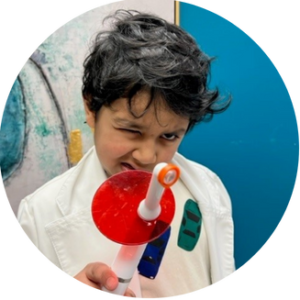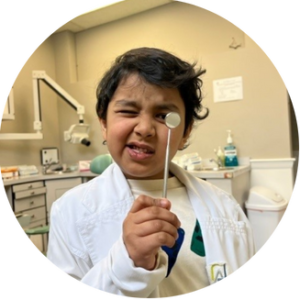


Please call our office as soon as possible if you break or loosen any of your appliances. Please do not come directly to the office – by calling us, you will allow us to create a time to see you. Even if you have a regular appointment scheduled, call us immediately to notify us if you need an appliance repaired.
The following orthodontic emergencies and their treatments are listed in the order of the least severe to the most severe. Only the most severe emergencies may require immediate attention by an orthodontist. The majority of these are easily treated with a follow up with our office.
This is not an emergency, but can be a little uncomfortable or embarrassing for the braces-wearing patient. It is easily fixed with a piece of dental floss. Try tying a small knot in the middle of the floss to help remove the food, or use an interproximal brush or toothpick to dislodge food caught between the teeth and braces.
Tiny rubber bands known as ligatures hold the wire to the bracket. If a ligature should come off, you may be able to put it back in place using sterile tweezers. When one ligature pops off or breaks, others may follow. Be sure to examine all ligatures. Missing or broken ligatures should be brought to our attention.
It’s normal for a patient to have discomfort for a day or two after braces or retainers are adjusted. But it can make eating uncomfortable. If your teeth are sore, stick to soft foods and rinse your mouth with warm salt water.
Some patients are susceptible to mouth sores. While braces do not cause them, they may be exacerbated by an irritation from braces. One or several areas of ulceration of the cheeks, lips or tongue may appear. This is not an emergency, but may be uncomfortable. To relieve discomfort apply a small amount of topical anesthetic like Ora-Gel directly to the ulcerated surface using a cotton swab.
Sometimes new braces can be irritating to the mouth, especially when the patient is eating. A small amount of non-medical relief wax makes an excellent buffer between the metal and mouth. Simply break off a small piece and roll it into a ball the size of a small pea. Flatten the ball and place it completely over the area of the braces causing irritation.
Occasionally, the end of a wire will work itself out of place and irritate the cheeks. Use a Q-tip or pencil eraser to push the wire so that it is flat against the tooth. If the wire cannot be moved into a comfortable position, cover it with relief wax. Please call our office to make us aware of the issue.
If the braces have come loose in any way, please notify our office to determine next steps. Brackets are the parts of braces attached to the teeth with special adhesive. They are usually positioned in the center of each tooth. If the loose bracket has rotated on the wire and is sticking out and the patient cannot immediately be taken to the orthodontist, you can temporarily fix to alleviate discomfort and prevent further damage. But take care to prevent swallowing or other injury.
To put the bracket back in place, use sterile tweezers to slide the bracket along the wire until it is between two teeth. Rotate the bracket back to the proper position, then slide it back to the center of the tooth.
This is rare but when it does happen, it can be fairly alarming to the patient. Remain calm. If the patient is coughing excessively or having difficulty breathing, the piece could have been aspirated. If you are able to see the piece, you may carefully attempt to remove it. Do not attempt if you could cause harm.
If appropriate under the circumstances, examine the patient’s braces for problems that may result from the missing piece, such as looseness or irritation and treat as specified above.
If you are unable to see the piece and believe may have been aspirated, notify the orthodontist immediately.
Source: AAO
29 Riverside Street,Nashua, NH 03062603-882-6100
142 Brimbal Avenue, Ste 3,Beverly, MA 01915978-774-8266
Too busy to make it to our office?
Take our Virtual Smile Assessment!
Our mission is to use the skill we have cultivated to help as many people smile as possible.
© 2025 Chelian Orthodontics. Dr. Suren Chelian, board certified, top rated orthodontist in Nashua, NH and Beverly, MA, providing braces, clear aligners (Invisalign) and orthodontic treatments in Nashua, NH and Beverly, MA.
Orthodontic Marketing by Nexunom
